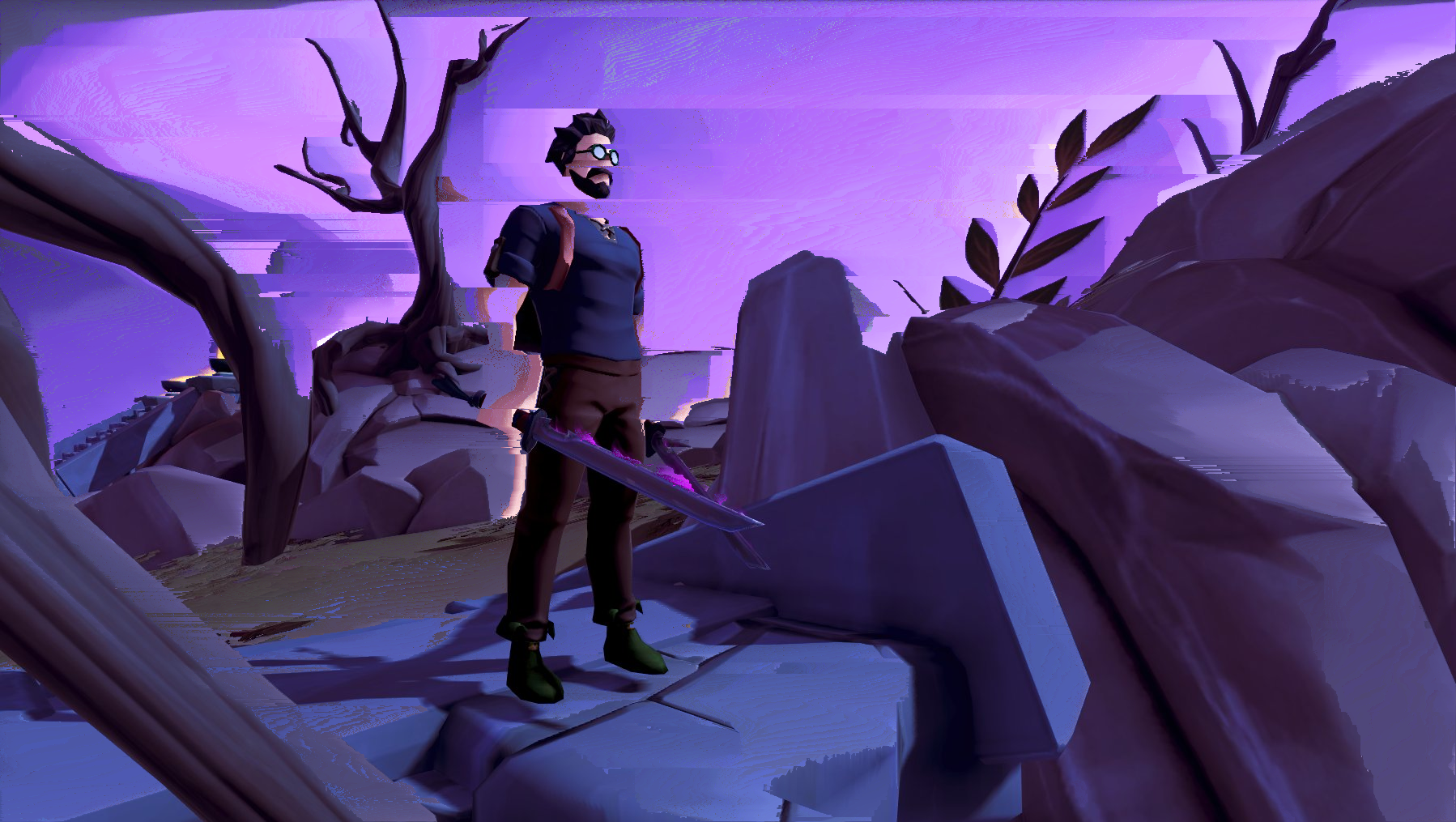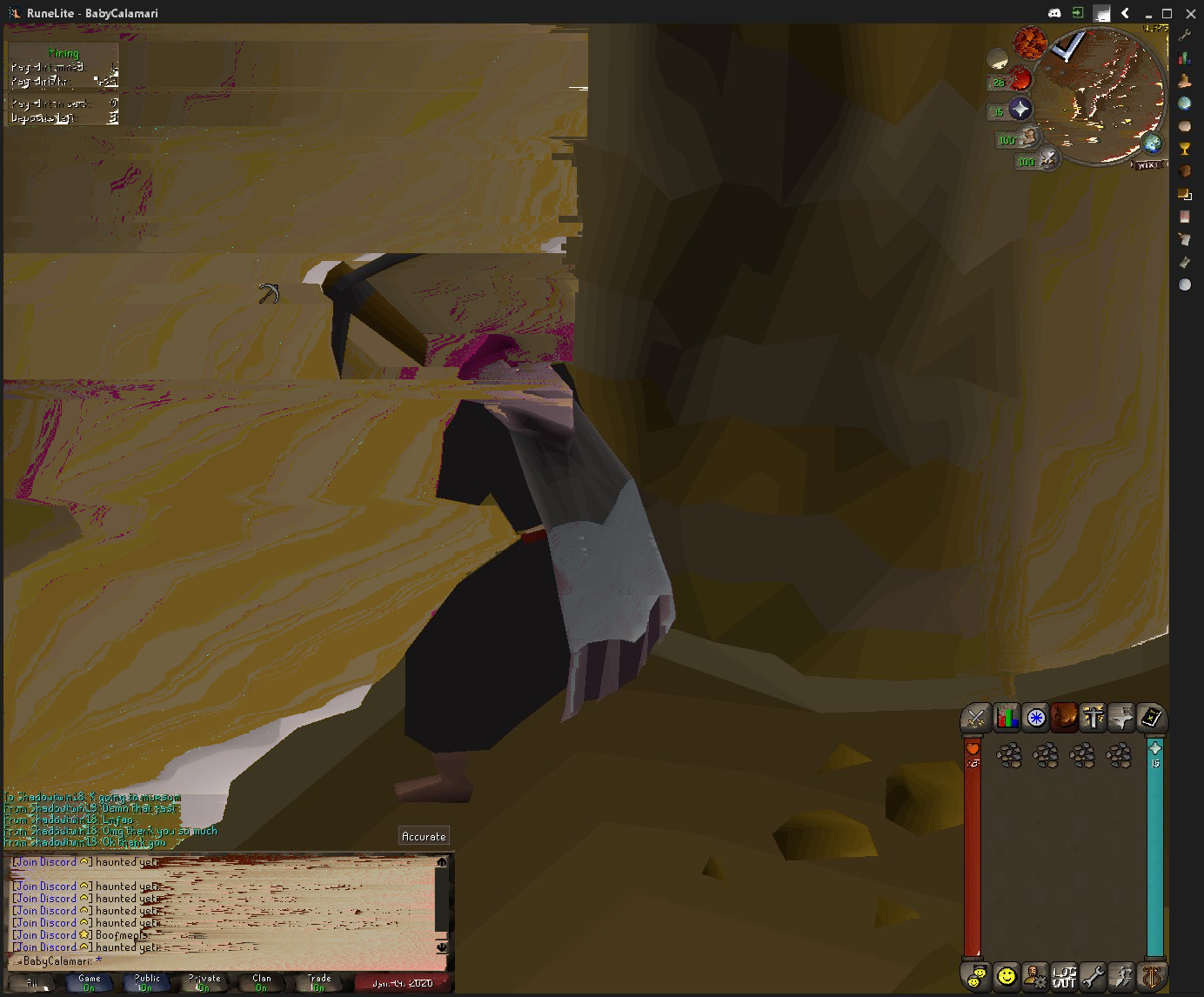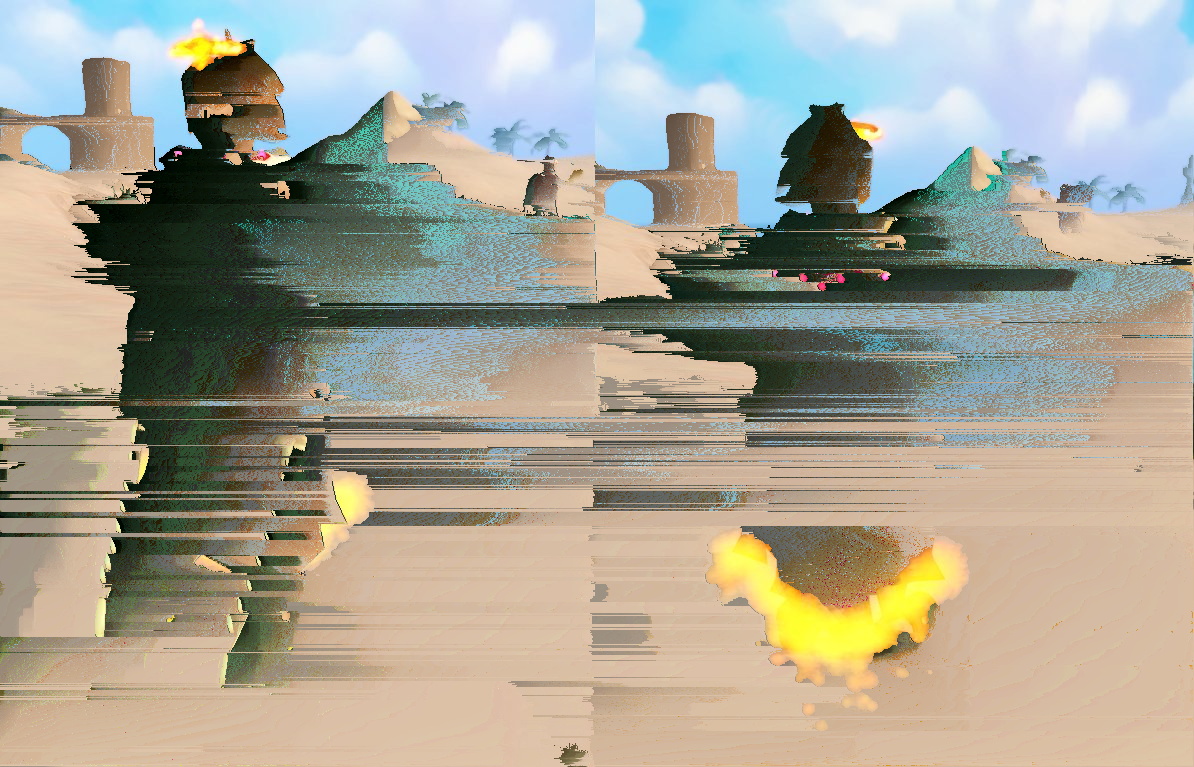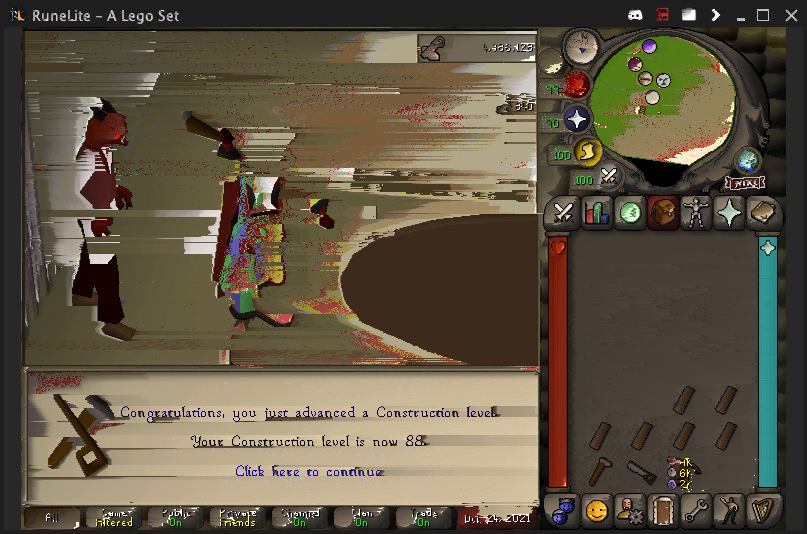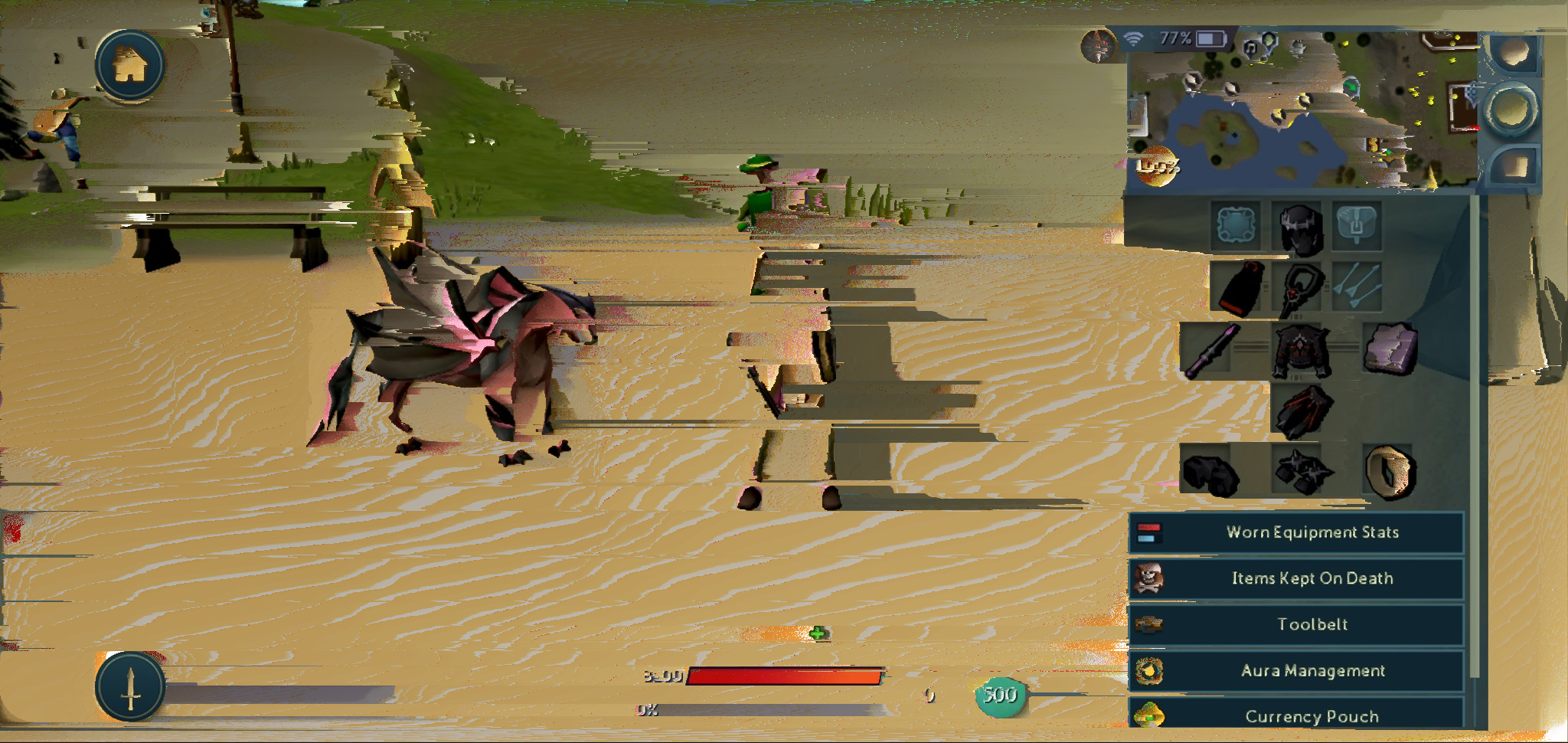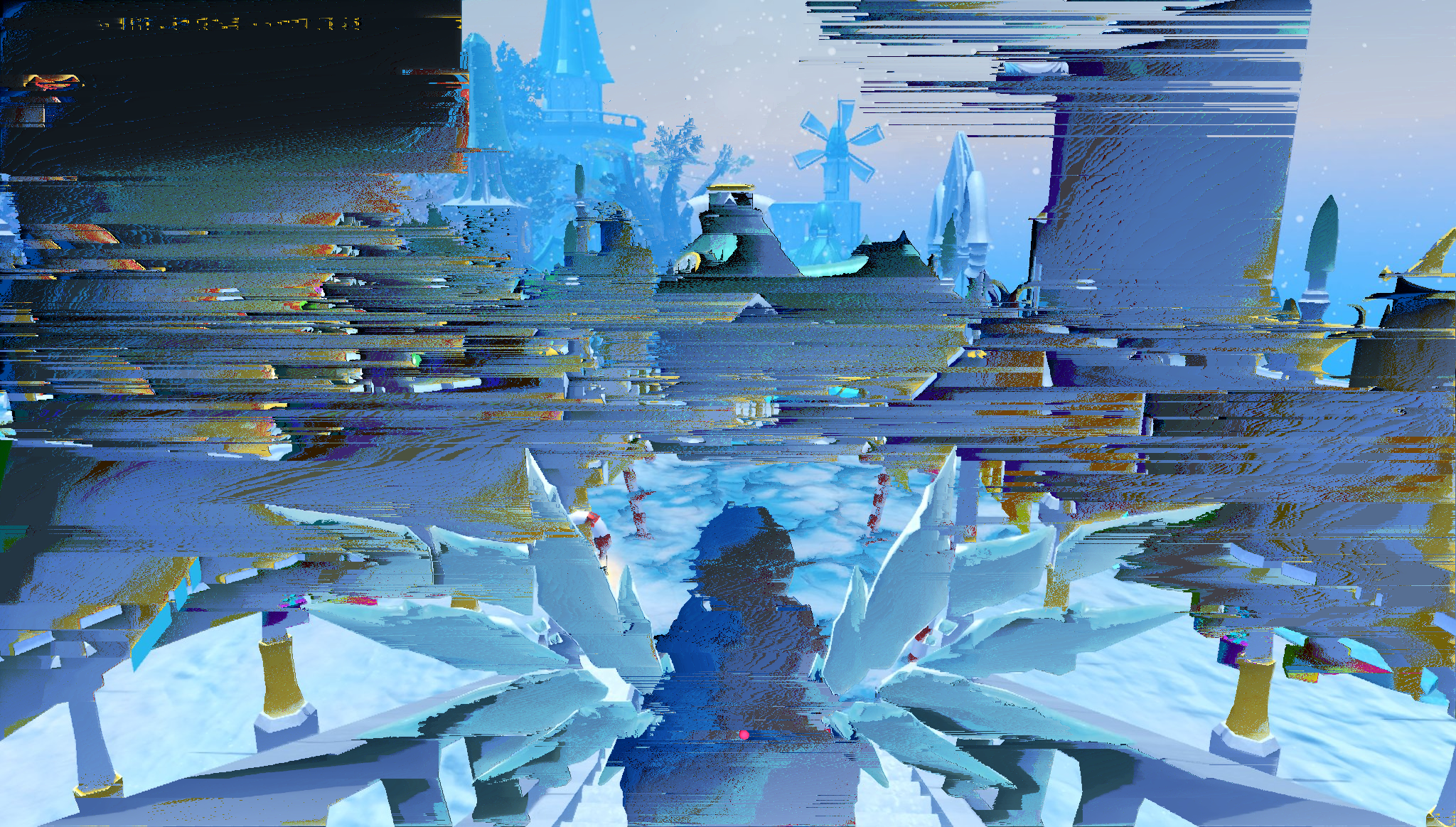Crafting & Items
I have mentioned that the bulk of RuneScape’s customization options lie in its items. Equipment can come in sets with “set effects,” it can be aligned with different gods or factions, it can degrade and be repaired, carry charges, and so on. Items can be consumed, created, mixed, modified, and hold other items. Items, more than anything else (spells, skills, quests), enable creativity, drive story, and direct activity.
This endeavor never crystallized into a “complete” subsystem the same way treasure trails and random events did, and it’s still more of a broad set of ideas and principles than anything else. I think the process is useful, but this is even less “drop-in” than the others, and unlike them would have to inform the world-building and system from the very start.
Picking Good Items
For a tabletop game, the difference between +19% and +20% is negligible because there is such a high cost to each roll compared with RuneScape’s “every 0.4s” combat system. So to create a wide variety of specialty items we require larger and weirder effects than the slow gradation from noob-tier to endgame gear. The items we pick should meet some number of the following requirements:
- Require effort to use.
- Be magical or interesting.
- Be valuable.
- Solve problems that exist.
- Suggest interesting opportunities.
- Open up new possibilities.
- Feel or look “cool.”
Writing Good Recipes
When we restrict ourselves to fewer items, treasure can feel underwhelming. We can improve this by importing item creation systems, similar to RuneScape’s or Minecraft’s. If you want good stuff, then you need to know what it’s made of and who or what has those things. Every potion has a recipe, every ingredient has a source. And conversely, every item has a use, there’s always someone’s looking for the junk you found, and some of the most exciting rewards are caches of unprocessed goods and half-items, useless on their own.
Ramshackle Crafting
This is what I’m calling the first of the three modes of crafting that I’m going to consider separately. Ramshackle crafting is when the PCs try to fetch a key from a deep well with a hook and a bit of string. But it can be more elaborate: maybe the players want to attach a giant crab claw to a stick and use it to grab a jewel embedded in the ceiling. Perhaps a broom, a sheet, and a lantern form a spectral scarecrow, guarding some dark corner of a dungeon while the party sleeps.
Odd Parts & Inventory
What’s important to enable this type of crafting is keeping useful things around. A lot of this could be done like blorb: desks contain staplers, broom closets have brooms, and the players can rely on these facts as they are learned. Detailed adventuring loadouts could also go a long way here, similar to the 5e equipment packs and toolkits in granularity. For example, the scholar’s pack includes “a little bag of sand.” It’s specific enough that I wouldn’t assume a character has it by default, but versatile. Secondarily, an effort can be made to stock more specific things in dungeons. A “pile of rubble” could tell a story, but a “smashed statue” may yet have uses, if the hands are intact, for example, or if the face could mold a mask.
There is a risk here that inventory management becomes overwhelming, tedious, or limiting. We could ignore it entirely, but left unchecked, a crafting system like this will incentivize pack-rat tendencies. I’m not sure what the ideal compromise is, but I’m inclined to think that it has some low upper bound.
Skill Issues
To encourage this type of game play, it might be useful to have a skill or ability of some kind. It’s often been said that “the answer isn’t on your character sheet,” but a character sheet is, in fact, a place that people look for options when they’re stuck. Especially for ramshackle crafting, I’m perfectly OK with a chance of failure, or various degrees of success. Alternatively, if the players have any kind of quick-reference rules, the option to craft a solution should be prominent there, even if character-specific abilities aren’t used.
Limited Uses
Borrowing loosely from Babes in the Wood (possibly in turn borrowed from elsewhere), we can say that when you use a crafted item while making a roll of some kind, that roll is made with advantage. After three such uses, the item’s improvised nature catches up to it and, and it breaks. Only one of the components used in its construction may be recovered.
Legendary Crafting
Aragorn brought the shards of Narsil to the elven smiths, who reforged them into Andúril. In RuneScape, the whip of an abyssal demon can be embedded inside the tentacle of a cave kraken to create the abyssal tentacle, a strong end-game weapon. (It can also then be cosmetically upgraded with an “ornament kit” earned during league play.) I consider both of these to be examples of “legendary” crafting: upgrading or creating strong items through a difficult or dangerous, but not necessarily complicated process.
Rumors and Visibility
The basis of legendary crafting is starting with things that are cool already: mythic weapons, valuable treasures, and important symbols. Players may want to track them down, or their presence could just be felt in the setting. Seeding good rumors will be key to this.
It might be fun, but difficult to achieve, to increase the visibility of “legendary” but non-unique items in the campaign. If the efreet lords are known to favor a specific kind of flaming halberd, then maybe a mercenary retinue or rival adventurer could have such a weapon long before the players will know where or how to obtain it. Of course this doesn’t change much if the players are just going to fight them and take it afterwards, so it would work best in non-combat scenarios, which then implies an amount of activity that this level of detail could detract from. Why mention the market guard’s weapon if not to foreshadow a fight? (RuneScape doesn’t have this problem because you can always see what other people are wearing my default. It is not limited by the GM’s bandwidth.)
Rumored Items
These items are ripe for being incorporated into new creations.
- Saint Hepsibeth haunts the battlefield where she fell, it is said, because her fingers were never recovered. Perhaps the bones are still there.
- At the center of the goblin’s furnace is a deep red ember that never goes out.
- When King Odric’s shield was punctured by a mighty bolt, he cast it aside in anger. Though it had saved his life, his arm was deeply wounded. This thankless buckler was taken up by a squire, but then lost again.
- The wizard Occubit thought that if he could just find the right vantage point, he could fit all of reality into a gemstone. This is obviously madness, but his last paper (rejected) insisted that from his astral observatory, he had captured the “tenth hell” in an emerald.
- Sir Gawain long dead, his sword Galatine was returned to the lady of the lake, who then lost it in a move. Its blade rusted away, only a fine ivory hilt remains.
- Water from the well of good fortune is fatally toxic. But an unbroken phial of it is still said to bring good luck.
Puissant Materials
Outside of reward caches, the following specialty materials might be sought out.
- Ironwood from a dryad grove.
- Ore from a haunted mine.
- Crystals from the clouds.
- A giant lobster’s shell.
- Spider-silk cloth.
- Ever-living mycelium.
Consider also, these weird woods.
Locations
Some part of the production may be location-specific and require travel.
- The blessing of a specific church.
- The expertise of a specific dwarf.
- A forgotten apparatus for energy infusion.
- A patch of garden in a specific micro-climate.
- The fires of a demonic mountain.
- The weight of a great waterfall.
Mentors and Artisans
Unlike with ramshackle crafting, here I think allowing the chance of failure or specifying degrees of success would undercut the excitement significantly. I’m tempted to use the Minecraft model, where if you’ve got the stuff, it’s assumed you know what you’re doing. Maybe only after finding a mentor or tutor once, as a type of “ingredient,” but also maybe just as something your character picked up along the way. Steve gets his golden apple, fighter gets his sword-chucks, and so on. If it’s really too specialized and it gets in the way, then there will be a wizard or apothecary or blacksmith willing to do the work for you.
Intentional Crafting and Potions
If ramshackle crafting is meant to formalize “dungeon bullshittery” and legendary crafting is meant to drive great quests and facilitate useful rewards, then intentional crafting is meant, more or less, to replace spellcasting. The results of it are not goals in and of themselves, but tools to solve other problems.
Potions are what I think about most here, because there are a lot of boring potions in D&D,1 but also a couple great ones. I don’t want my players to spend time and effort running all over the map for a healing potion. But I do want my players to do that for a potion of water-breathing when they need to negotiate with an underwater kingdom. I imagine these projects in the same vein as spells: a spell can solve a problem, but it shouldn’t be the planned solution. Let’s consider a few “good” potions.
- Potion of Water-Breathing. Good for exploring the seafloor, salvage. Iconic. Alternatives: bathyscaphe, SCUBA gear.
- Potion of Levitation. Good for reaching the cloud kingdoms and other out-of-the-way places or overcoming height barriers. Alternatives: magic beanstalk, flying carpet, engineering projects large and small.
- Potion of Shrinking. Good for sneaking and fitting into small spaces. Evokes whimsy. Alternatives: a weight on a line, a hooked bit of wire, a microscope.
- Potion of Strength. Good for accomplishing Herculean tasks, or Goliath feats of intimidation. Alternatives: various simple machines or SFX.
- Potion of Shadow-Travel. Good for learning secrets and history, or sneaking around. Alternatives: private libraries, difficult interviews.
- Potion of Nobility. Good for getting in to parties, intimidating officials, commandeering public resources. Alternatives: a knighthood, a high Bluff skill, friends in high places.
We can and should consider other types of item. It’s not news that +1 swords are boring, but if we want to build our items into a network of ingredients and applications we’ll need to really cut the chaff.
Common Ingredients
These can be found in stores or on the ground. They add flavor or logic, but shouldn’t be a major impediment.
- Seawater.
- Feathers.
- Ants.
- Au Jus.
- Black Ink.
- Mud.
Rare Ingredients
These cost money or time, and maybe can’t be found just anywhere. They represent the first “effortful” leg of a recipe, but are generally mundane.
- Catfish teeth.
- Fulgurite.
- Magnifying lens.
- Snow from a mountain cap.
- Fireflies.
- Ambergris.
Weird Ingredients
These are probably magical, or at least require some expertise to find. I think a good recipe needs at least two ingredients that require planning (“rare” ingredients being the other).
- Liquid air.
- A cicada husk.
- Part of the sun.
- A year of life.
- A piece of shadow.
- A king’s blood.
Inventory & Banking
Improving skills in RuneScape requires significant stockpiles of material which are conveniently abstracted into a “bank.” Without assuming the same level of interdimensional multinational non-profit corporate infrastructure, I think it would be a good idea to establish some customs about keeping things in safe areas, perhaps for a small fee. Maybe churches or town halls commonly provide this service.
This leaves only the problem of transportation, which again, is heavily abstracted in RuneScape. Personally, I favor heavily abstracted encumbrance systems (like Electric Bastionland’s), but I think where retrieving bulky items from a dangerous area is most of the challenge, something a little more is required.
Milk Runs
Supposing the characters research the method to create a potion of water breathing, and they track down the ingredients and successfully open negotiations with Atlantis. It would quickly become boring for them to need to repeat this process every time they want to visit their new friends. Far better to leave the recipe in the hands of a trusted NPC who can produce more as needed and sell it at-cost or nearly. Perhaps a qualified apothecary or specialist could even reproduce it without some of the harder-to-find components, given a sample of the final product.
Mixing and Matching
Putting all of these systems together into a coherent sandbox environment, it should become apparent that the distinctions will begin to blur. There’s no reason that saint’s bones can’t be a critical ingredient of some potion, or that the eternal ember couldn’t be used to make a fake ghost look spooky while the party tries to sleep. The ramshackle/legendary/intentional framework is really just intended to make sure that we’ve considered all aspects of crafting to at least some extent.
Applicability
Through all of this, it’s important not to lose sight of general utility and reasonableness. The principles of good treasure are still important here, and a potion of nobility is just one way to get into any fancy party. The strength of a tabletop RPG is that there is more than one way to do it, and in chasing the aesthetic of a video game it would be a shame to also gain its limitations. Just be ready to make the party work for whatever plan they make, as that’s where the adventure is.
The images in this post were “glitched” in Processing with the ASDFPixelSort script. The source images are various #fashionscape posts.
RuneScape is not immune to this either: arguably prayer potions are the most important potions in the game, and they’re kind of implicitly boring. I’m taking some license with the results here, even if the method is still from RuneScape.↩︎
